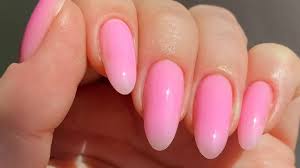- General
- Updated on November 24, 2025
Hidden Toxins in Nail Polish: What Your Manicure Isn’t Telling You

Introduction
A fresh manicure can make you feel instantly polished—literally and emotionally. But beneath the glossy shine and long-lasting pigment, there’s often a cocktail of chemicals most people never think twice about. Nail polish has come a long way, yet many formulas still contain ingredients that can irritate skin, disrupt hormones, or trigger allergies. If you love doing your nails but want to stay informed, it’s worth understanding what might really be inside that little bottle.
Let’s take a closer look at the hidden toxins, why they matter, and how you can make safer choices without giving up color.
Why Nail Polish Still Contains Problematic Ingredients
Nail polish has to perform a tough job—stick to your nails, dry quickly, resist chipping, and look vibrant. To achieve all this, brands rely on a mix of solvents, plasticizers, resins, and colorants. Some of these are harmless, while others carry risks if you’re exposed repeatedly.
The tricky part? Most of these chemicals evaporate into the air while you’re painting your nails, which means exposure often happens through both skin contact and inhalation. This is why nail salons sometimes make your eyes water even before your manicure begins.
The “Toxic Trio” You Should Know About

1. Formaldehyde
Often used as a hardening agent, formaldehyde is a known irritant and classified carcinogen. While occasional exposure from nail polish is small, repeated or prolonged contact can cause skin irritation, burning, and allergies. For some, it can even trigger dermatitis around the nails.
2. Toluene
This solvent helps create that smooth, even finish. But it also affects the nervous system when inhaled in high amounts, leading to headaches, dizziness, or nausea. Pregnant women are often advised to avoid exposure entirely.
3. Dibutyl Phthalate (DBP)
A plasticizer that makes polish flexible and less likely to chip, DBP is linked to endocrine disruption. That means it can interfere with hormones—something you definitely don’t want from a beauty product.
Many modern “3-free,” “5-free,” and “10-free” polishes remove these ingredients, but not all do. Labels can be confusing, and formulas can vary by region, so it’s always worth double-checking.
Other Chemicals That Might Be Hiding in Your Polish
Even if a brand is “free” from the most well-known toxins, other questionable ingredients can still slip in.
1. Camphor
Used to give shine, but too much can cause nausea or headaches.
2. Ethyl Tosylamide
Helps polish dry faster—but is banned in Europe due to antibiotic resistance concerns.
3. Xylene
Found in some formulas and known to cause headaches and irritate the eyes or throat.
4. Triphenyl Phosphate (TPHP)
A chemical suspected of affecting hormone regulation and metabolism.
These ingredients don’t affect everyone the same way, but if you’re using nail polish regularly, they’re worth being aware of.
How These Toxins Affect You Over Time
Most people won’t experience dramatic reactions right away. Instead, exposure often builds slowly. Here’s what long-term or frequent use may lead to:
- Nail brittleness or peeling
- Dry, darkened cuticles
- Skin irritation or rashes
- Headaches from fumes
- Increased sensitivity to allergens
- Hormonal imbalance (with certain chemicals)
If you’re someone who always has polish on—no breaks, no bare nails—your risk naturally goes up.
What to Look for When Choosing Safer Nail Polish
Switching to cleaner options doesn’t mean sacrificing color or staying power. In fact, many high-performing brands are now free from harmful toxins.
Here’s how to shop smart:
1. Check for “3-free” or beyond
The higher the number (5-free, 7-free, 10-free), the fewer questionable chemicals.
2. Look for transparent ingredient lists
Brands that openly share ingredients usually have nothing to hide.
3. Avoid excessive fragrance or strong odors
These often signal heavy solvents.
4. Opt for water-based formulas if you’re sensitive
They’re gentler but may require more frequent reapplication.
5. Be careful with quick-dry polishes
They often rely on harsher solvents.
How to Reduce Exposure Without Giving Up Your Manicures
You don’t have to quit nail polish altogether—just tweak your routine a little:
- Paint your nails in a well-ventilated area.
Open a window, turn on a fan, or sit outdoors. - Take breaks between manicures.
Let your nails breathe for a few days every couple of weeks. - Switch to gentler removers.
Acetone-free formulas are easier on your nails and skin. - Moisturize your cuticles.
Keeps your nail barrier healthy and reduces irritation. - Patch-test new brands.
Apply a bit near one nail and monitor for redness or itching.
Little adjustments like these help protect your long-term nail and skin health while still letting you enjoy the occasional glam.
Also Read: 7 Stylish Suits Must Have in Every Girls Wardrobe for Wedding Seasons!
Final Thoughts
Your manicure shouldn’t come with hidden risks—and with today’s cleaner formulations, it doesn’t have to. By understanding what’s inside your polish and being mindful about how often you use it, you can enjoy strong, beautiful nails without compromising your well-being. Beauty trends change, but taking care of your health never goes out of style.
Join the discussion
Related Articles
No results available
ResetTrending Articles


- Health
- Updated on November 24, 2025


- General
- Updated on November 24, 2025


- General
- Updated on November 19, 2025


- General
- Updated on November 19, 2025


- General
- Updated on November 14, 2025


- Tech
- Updated on November 12, 2025


- General
- Updated on November 8, 2025


- General
- Updated on November 6, 2025


- Sports
- Updated on November 5, 2025


- General
- Updated on November 4, 2025
No results available
Reset


